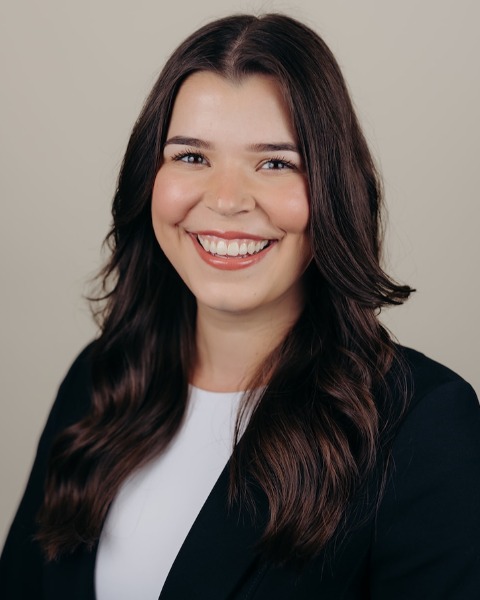Sunday Poster Session
Category: Endoscopy Video Forum
P0589 - Challenging Retrieval of a Large Gastric Adenocarcinoma After Endoscopic Submucosal Dissection

Kara Ingram, BA
Saint Louis University School of Medicine
Saint Louis, MO
Presenting Author(s)
1Saint Louis University School of Medicine, Saint Louis, MO; 2SSM Health Saint Louis University Hospital, St. Louis, MO
Introduction:
Endoscopic submucosal dissection (ESD) allows curative, en bloc resection of early-stage gastric adenocarcinoma. However, removal of large lesions poses technical challenges, particularly with passage through the lower esophageal sphincter (LES). Manipulation in this area can provoke sphincter spasm, increasing the risk of specimen fragmentation or mucosal injury. This case describes successful en bloc resection and retrieval of a large gastric adenocarcinoma originating from the lesser curvature, using an ESD approach to safely navigate LES-related challenges.
Case Description/
Methods: A 54-year-old female was found to have a 40 mm adenocarcinoma (Paris IPS, JNET 2B) on the lesser curvature of the proximal gastric body. The lesion had a thick 4 cm stalk, and neoplastic tissue extended close to the base of the stalk (within 15 mm), making ESD the preferred method to ensure R0 resection. Lesion margins were demarcated using high-definition white light, narrow band imaging, and thermal marking. Submucosal lift was achieved with a premixed solution of methylene blue, saline, and epinephrine. Circumferential incision and submucosal dissection were performed with a 2.0 mm electrosurgical knife. Dissection was complicated by submucosal fibrosis and multiple large-caliber vessels, which were treated with EndoCut mode and 5 mm coagulation forceps. The 40 mm lesion was resected en bloc, and the defect closed with eight hemostatic clips. After several failed retrieval attempts using an endoscopic retrieval net and overtube, the intact specimen was removed via a double-channel scope using two separate forceps to elongate the lesion and a foreign body retrieval hood to allow passage through the LES.
Discussion: Due to the lesion’s size, extraction across the LES posed unique challenges. To avoid sphincter spasm, fragmentation, or mucosal injury, a multimodal extraction strategy was employed. A double-channel scope and forceps with a foreign body retrieval hood lengthened the lesion, which minimized trauma during passage through the LES. Controlled, visualized extraction further reduced spasm risk and ensured intact removal. This approach was critical to achieving curative resection without complications. Pathology confirmed an R0 resection with clear submucosal margins. This case demonstrates that when performing ESD for large lesions near the EGJ, strategic planning and adjunctive tools are critical not only for resection, but also for intact retrieval.
Disclosures:
Kara Ingram indicated no relevant financial relationships.
Ameya Deshmukh indicated no relevant financial relationships.
Marina Kim indicated no relevant financial relationships.
Kara Ingram, BA1, Ameya Deshmukh, DO2, Marina Kim, DO2. P0589 - Challenging Retrieval of a Large Gastric Adenocarcinoma After Endoscopic Submucosal Dissection, ACG 2025 Annual Scientific Meeting Abstracts. Phoenix, AZ: American College of Gastroenterology.
